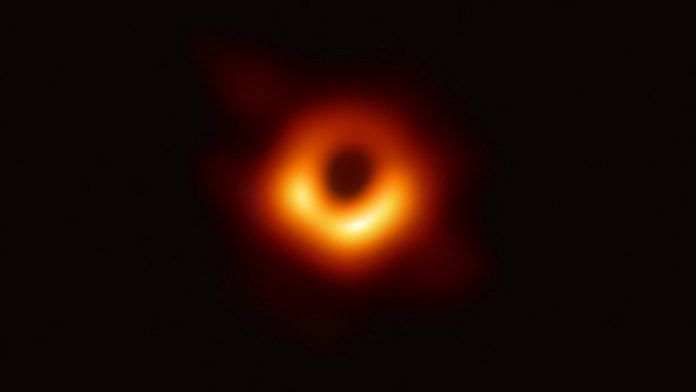New method predicts intricate internal structure
Scientists at Harvard University have found a way to produce much sharper images of black hole as compared to the blurry ones we’ve seen so far.
Last year, the international coalition of scientists, who run the Event Horizon Telescope (EHT), revealed the first-ever image of a black hole’s shadow.
In the new study, researchers revealed calculations that predict an intricate internal structure within black hole images caused by extreme gravitational light bending. Read more on Futurism.
60 more Starlink satellites launched by SpaceX
SpaceX has successfully launched a new batch of 60 Starlink satellites into the orbit this week. This brings the total number of such satellites to more than 350.
The company has several more Starlink missions planned for this year, with an additional 180 satellites due to launch.
Astrophysicists across the world are already expressing dismay as the large number of satellites is interfering with telescope observations around the world. Read more on Space.
Mysterious structure built with mammoth bones
British scientists have examined an ancient site and revealed a structure built with mammoth bones, dating back to 20,000 years ago. The structure also included bones from animals like the reindeer, horse, bear, wolf and arctic fox.
While 70 similar structural sites exist in Ukraine and west Russia, this site is deemed to be the oldest. The 40-foot-wide and circular structure included the skulls, skeletons and tusks of more than 60 woolly mammoths.
The purpose of this structure remains a mystery. More on The New York Times.
Prehistoric fish may hold clues to origins of human hand
Scientists have found the fossils of a prehistoric fish that lived in what is now Canada about 380 million years ago. This may explain how the human hand originated.
The fossil of the fish represents a landmark event in the history of life on Earth — the transition of fish to land vertebrates.
For this to happen, anatomical changes were needed. Inside the tip of the front fins of this fish, scientists found tiny radial bones arranged in a series of rows — the precursor to fingers. More in Reuters.




Why t f they don’t find antidote of corona